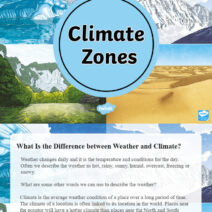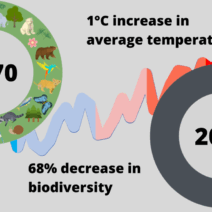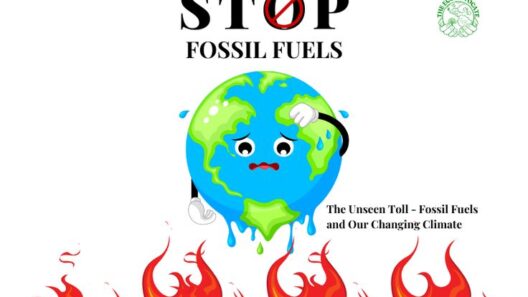As the sun bathes the Texas coastline in its golden glow, an invisible adversary lurks beneath the surface, eroding the boundaries between land and sea. Houston, a city often celebrated for its resilience and indomitable spirit, faces an urgent inquiry: How far will sea levels rise due to the inexorable march of global warming? This question extends far beyond mere curiosity; it encapsulates the fate of communities, ecosystems, and economies alike.
The scientific consensus is clear: the Earth’s climate is undergoing a profound transformation. Sea levels are rising at an alarming rate, driven primarily by the melting of polar ice caps and glaciers, as well as the thermal expansion of seawater. Houston, with its proximity to the Gulf of Mexico and its extensive coastal ecosystem, is positioned precariously at the forefront of this crisis.
To comprehend the gravity of the situation, one must delve into the statistics. According to climate models, sea levels could rise by as much as 1 to 2 meters by the year 2100 if the current trajectory of greenhouse gas emissions remains unchanged. Houston’s unique geography exacerbates this predicament; as the sea rises, the city faces a dual challenge of both encroaching water and land subsidence due to excessive groundwater extraction. This confluence of factors creates a scenario that is as sobering as it is inevitable.
Imagine a juggernaut lurching forward, fueled by the insatiable appetite for fossil fuels and industrial expansion. This juggernaut is climate change, and its momentum is daunting. Flooding events in Houston have grown in frequency and intensity, leading to devastating consequences for its residents. The destruction wrought by Hurricane Harvey in 2017 serves as a stark reminder of nature’s ferocity and the perilous tightrope that cities like Houston must walk.
Strategically, the city has implemented various measures to mitigate the impact of flooding. Infrastructure improvements, such as the construction of reservoirs and improved drainage systems, exemplify attempts to stave off the advancing tide. However, these measures are akin to building sandcastles at the ocean’s edge: the efforts may provide temporary reprieve, but the relentless waves of climate change threaten to wash them away.
Is it possible to alter the course of this juggernaut? Proponents of sustainability argue that transformative changes can indeed be enacted. Investments in renewable energy, such as wind and solar power, could significantly reduce the carbon emissions contributing to global warming. Communities can also embrace innovative urban planning that prioritizes green spaces and implements sustainable water management techniques. Such initiatives empower residents to be stewards of change, to reclaim agency in the battle against rising tides.
The metaphor of a rising tide serves not just as a warning, but as an emblem of unity and collective action. Just as the tides are influenced by lunar cycles, human choices shape the trajectory of climate change. The response to this crisis necessitates collaboration between governments, businesses, and individuals. Policy frameworks that prioritize environmental justice are essential—vulnerable communities, often least responsible for emissions, bear the brunt of climate impacts. Incorporating their voices into the decision-making process is crucial for fostering equitable solutions.
Beyond the immediacy of floods and storms, the ramifications of rising sea levels extend to the very fabric of Houston’s identity. Cultures, livelihoods, and natural ecosystems are intricately intertwined; the loss of land to the encroaching Gulf threatens not just physical territory but social cohesion. The rich diversity of habitats that flourish along the coastline must be protected, as they play a critical role in maintaining ecological balance. From the subtle grace of migratory birds to the resilient mangroves that guard against erosion, every element is a vital thread in the intricate tapestry of the natural world.
Furthermore, the economic implications of climate-induced changes cannot be overstated. Houston’s economy, heavily influenced by its oil and gas industry, finds itself at a crossroads. The push for sustainability offers a unique opportunity to pivot towards emerging markets such as green technology and environmental consulting. By harnessing innovation and adaptability, Houston can transition from a fossil-fuel-dependent economy to one rooted in resilience and sustainability. This could position the city as a beacon of hope in the face of adversity, showcasing the potential to thrive in a rapidly changing world.
The specter of climate change looms large, yet it also invites introspection and reinvigoration. Each inch of rising sea level symbolizes a call to action, an urgent reminder that the time for complacency has long passed. Through conscious choices and unified efforts, the people of Houston can chart a course toward a sustainable future, where the tide does not dictate their destiny. Rather, they can stand steadfast, confronting challenges with innovation, collaboration, and unwavering resolve.
Ultimately, the question is not simply about how far the sea will rise, but how far humanity is willing to go to safeguard the future. Houston stands as a testament to resilience, a city facing an existential threat with fortitude and creativity. The tide may rise, but so too can our collective determination to forge a sustainable path forward. The narrative of Houston is not solely one of vulnerability; it is a story infused with hope, where the indomitable spirit of its residents can guide the city towards a brighter and more sustainable horizon.







